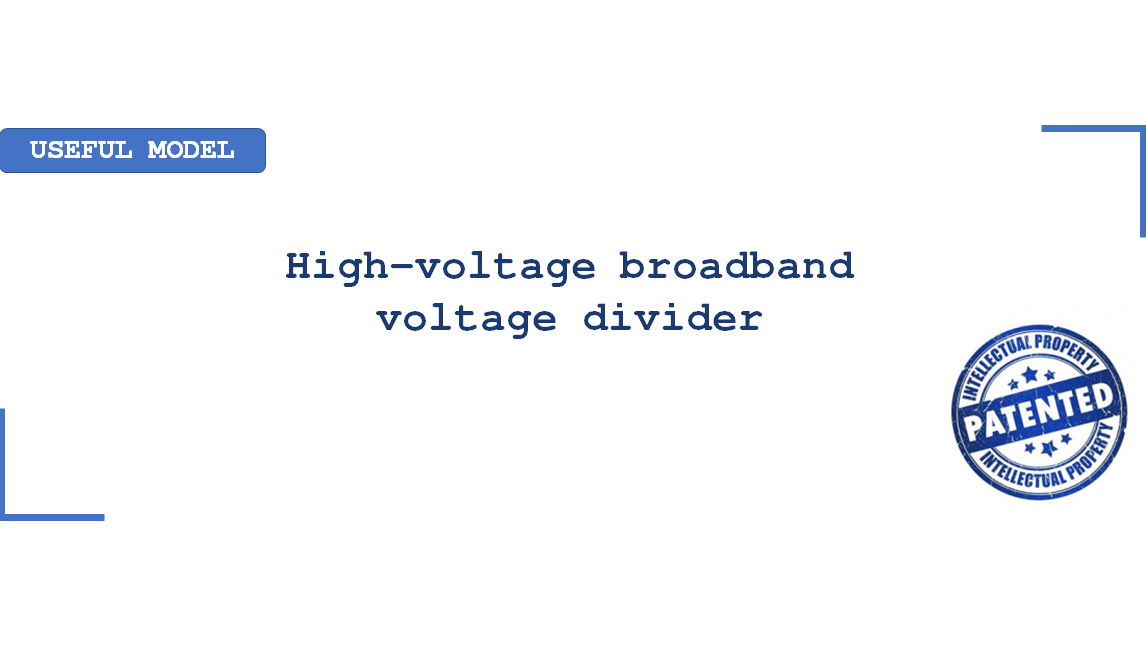A high-voltage broadband voltage divider consists of an active part located in a housing that performs mechanical, switching, and insulating functions. The active part is a complex electrical circuit formed by concentrated capacitive type elements (capacitors) and ohmic type elements (resistors), and in some parts of this circuit has an electrical connection with structural elements made of conductive materials that provide electromagnetic shielding of the concentrated elements, and the electrical circuit of the active part of the voltage divider is divided into a high-voltage arm and a low-voltage arm. Low-voltage measuring devices are electrically connected to the concentrated elements of the low-voltage arm. The high-voltage arm is segmented into separate sections of concentrated elements, which are spatially located between parallel conductive shielding disks and have electrical contact with these disks. Each segment of the high-voltage arm circuit consists of several parallel branches of the circuit – one branch consists of high-impedance resistors, and the other consists of a ceramic capacitor and a low-impedance resistor connected in series. The active part of the voltage divider has a modular structure. The high-voltage part (high-voltage arm) of the voltage divider is made of one or more high-voltage modules of the same type, each of which has two electrically independent parallel branches of the electrical circuit – a measuring circuit and a shielding circuit, which have electrical contacts with the structural elements of the module and are located between two conductive shielding disks, which are also elements of the module body. The shielding circuit of the module is made in the form of high-voltage capacitor-type insulation located between different-potential shielding disks in such a way as to provide a total shielding circuit capacitance much greater than the parasitic capacitance of the shielding disks on the grounded surface, and at the same time to reduce the potential difference between the shielding circuit and the concentrated elements of the measuring circuit, which are located inside the inner hole of the high-voltage capacitor-type insulation.
The utility model relates to the field of electrical engineering, in particular the design of high-voltage measuring voltage dividers of ohmic and capacitive-ohmic types, in which the dependence of the scale conversion coefficient on the shape (frequency) of the input voltage is significant, and which are designed for large-scale conversion of the high input voltage to a level acceptable for measurement at the output of the voltage divider by existing low-voltage measuring devices.

